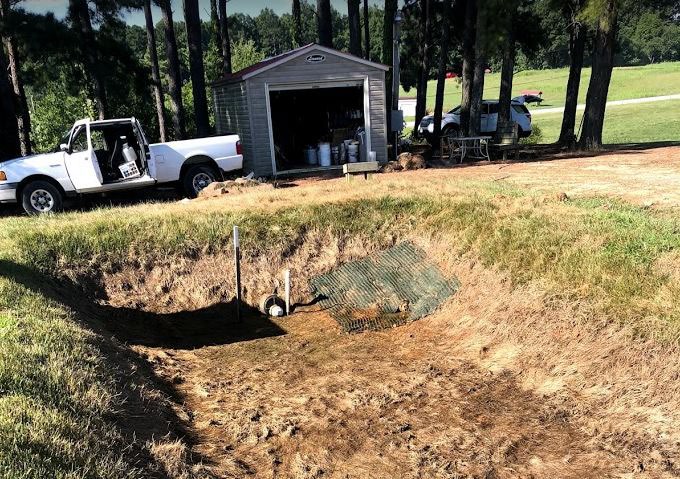Dry detention basins (DDBs) are a common type of stormwater control measure (SCM) designed to mitigate the adverse impacts of increased runoff associated with urbanization. Under current standards, DDBs are primarily designed for issues related to water volume, such as flooding and erosion. However, attention is increasingly turning to issues of water quality. The documented water quality performance of standard DDBs varies widely, but pollutant removal is generally limited. This study examined four retrofit designs and their abilities to improve DDB pollutant removal efficiency via a series of controlled plot trials conducted on a DDB at North Carolina State University’s Sediment and Erosion Control Research and Education Facility (SECREF) in Raleigh, NC. Retrofit configurations included the addition of porous coir baffles (B), a floating skimmer outlet (S), and an internal water storage (IWS) system. A dual retrofit design that employed a skimmer outlet and porous baffles in tandem (S+B) was also included. Each of the four retrofit configurations and a standard DDB control design (C) were tested using pollutant-spiked water to simulate runoff from 0.5-, 1.0-, and 2.0-inch rain events from a 0.1 acre watershed. Each configuration was tested at each storm size in duplicate, resulting in n=6 for each design. Comparisons of influent and effluent concentrations of total suspended solids (TSS), total Kjeldahl nitrogen (TKN), ammonia nitrogen (NH4+), nitrate/nitrite nitrogen (NOX), total nitrogen (TN), orthophosphate (OPO4-), total phosphorus (TP), and a series of dissolved metals (Cd, Cu, Pb, Zn) quantified water quality performance.

All basin configurations, including the control, significantly and substantially reduced TSS from the inlet to the outlet at rates higher than those reported in the literature and in crediting documents, but there was no evidence of differences in TSS removal among designs. While no particular basin configuration provided significantly better TN removal, data suggests that retrofits causing prolonged saturation (S, S+B, IWS) could improve denitrifications potential. The IWS basin captured TP at significantly higher rates than the other designs, but all effluent concentrations were substantially lower than the TP effluent concentration credit assigned by the North Carolina Department of Environmental Quality (NCDEQ). The optimal hydraulic retention time (HRT), highly controlled influent concentrations, and relatively large particle sizes could partially account for the observed TSS, TN, and TP removal. With the exception of the baffles basin exporting Cd, none of the configurations had any significant impacts on the effluent concentrations of the dissolved metals. This study does not provide evidence that any of the analyzed basin configurations improve water quality treatment of DDBs in both significant and substantial ways, likely due to the high overall performance of every basin design. However, data trends suggest that retrofitting DDBs with an IWS system could improve cumulative load reductions through increased infiltration. Future research is needed to assess the hydrologic performance of IWS in DDBs.
